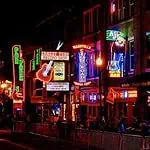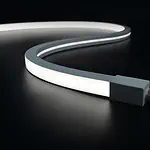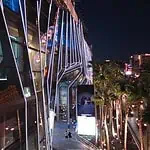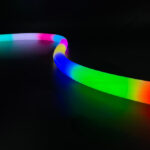Neon flex lights are one of the most popular and versatile lighting options on the market today. They are perfect for everything from creating a cozy atmosphere in your home to brightening up a commercial space. But with so many different types, colors, and styles of LED neon flex lights available, it can be hard to know where to start. This guide will provide you with all the information you need to choose the perfect LED neon flex lights for your needs.
What is Traditional Neon Lights?
Traditional Neon lights are brightly emitting electrified glass tubes or bulbs filled with rare neon gas or other rare gases and are a type of cold cathode gas discharge lamp. A neon tube is a sealed glass tube with electrodes at both ends, filled with low-pressure gas. A voltage of several thousand volts is applied to the electrodes, ionizing the gas in the tube, causing it to emit light. The color of the light depends on the gas in the tube. Neon is a transliteration of neon light, a rare gas that emits a popular orange-red light. But other colors are produced using other gases, such as hydrogen (red), helium (pink), carbon dioxide (white), mercury vapor (blue), etc.
What is LED Neon Flex Lights?
LED Neon Flex Light is a flexible linear uniform light that uses high brightness SMD LED strips as the internal light source and is wrapped with silicone, PVC or PU(Polyurethane) to diffuse the light.
What are the features of LED Neon Flex lights?
1. The working voltage is low because of the LED light source. The power consumption is small and energy-saving. Even in the 24Vdc, it can work well, and its power consumption generally does not exceed 15W per meter.
2. High brightness. The light source is made of ultra-high brightness SMD LEDs, with a density of 120 LEDs per meter, ensuring high brightness and an overall uniform luminous effect.
3. Durable and long life. The light source is made of LEDs, which can last up to 50,000 hours. The flexible silicone/PVC/PU gel is also used, so there is no problem breaking like traditional glass neon light.
4. Flexible, the LED neon flex light can be bent to a minimum diameter of 5CM and sheared.
5. Safe. Unlike traditional glass neon lights, which require a high voltage of up to 15,000V for regular operation, the LED neon flex light operates at 12V or 24V and is safe to use as it will not break and has low heat dissipation.
6. Simple and easy to transport and install. Because the light source is LED and the casing is PVC/Silicone/PU, it will not break during transportation. You only need to fix the mounting clips first or mounting channels, then press the LED flexible neon into mounting clips or mounting channels.
What is the advantages of LED Neon Flex Lights compare with Traditional Neon Lights?
1. Traditional neon lights are expensive, complex, and inconvenient when using glass tubes, high voltage electricity, and inert gas. LED neon flex lights using LED technology and a new structure, with a PVC, silicone, or PU housing wrapped around the LED light source, using unique optical design technology and a special housing design to increase the intensity and uniformity of the light. The LED neon flex is easy to manufacture and very efficient.
2. LED neon flex lights are brighter than traditional neon lights.
3. LED neon flex lights have a longer life span and are more durable. With LED as the light source and PVC/Silicone/PU housing, the life span of LED neon flex is up to 30,000 hours.
4. LED neon flex lights are more energy-efficient, with a minimum power of less than 5W per meter than traditional glass neon lights, generally more than 20W per meter.
5. Traditional neon lights use a transformer to raise the voltage from 220V/100V to 15000V to excite the inert gas in the glass tube. One set of glass tube can only emit one color of light. If multiple colors are required, multiple sets of glass tubes are needed. And the traditional neon shape needs to be designed in advance, and the shape cannot be changed after the factory has produced it. LED neon flex lights can be bent and cut at the site, and there are many different colors to choose from white, tunable white, RGB, RGBW, DMX512 Pixel, etc.
6. LED neon flex lights is safer, as it uses low voltages: 12V, 24V, shockproof, low heat dissipation, and safe to use.
7. Conventional neon lights can only work at normal room temperature, and the voltage must be raised during use, which is also more expensive and has a short service life. The LED neon flex light uses LED as the light source, a cold light source with low heat dissipation and low power consumption. It is also shockproof and heat resistant.
8. LED neon flex lights are more friendly to the environment. While traditional neon lights are polluted with heavy metals, LED neon flex lights do not contain heavy metals or other harmful substances.
What is LED Neon Flex Lights used for?
1. Signage & Exhibit Lighting
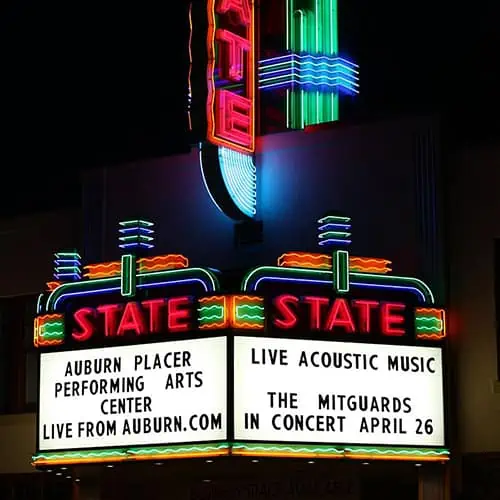
2. Building facades

3. Cove lighting
4. Retail displays
5. Architectural lighting
6. Marine Lighting
7. Automobile Lighting

8. Artwork Lighting

9. Special Event Lighting
10. Home Lighting

Structure of LED Neon Flex Lights
The LED neon light consists of a flexible LED strip inside and wrapped with PVC, silicone or PU to diffuse the light and make the light uniform.
Classification of LED Neon Flex Lights
Bending Direction: Horizontal Bending(Side Bending), Vertical Bending(Top Bending), 3D Bending(Horizontal & Vertical Bending), 360 Degree Round
Housing Material: PVC / Silicone / PU(Polyurethane)
Working Voltage: Low voltage(12V/24V/36V/48V), High voltage(120VAC/220VAC)
Light Color: Monochrome, Tunable White, RGB, RGBW, DMX512 Pixel RGB, SPI Pixel RGB



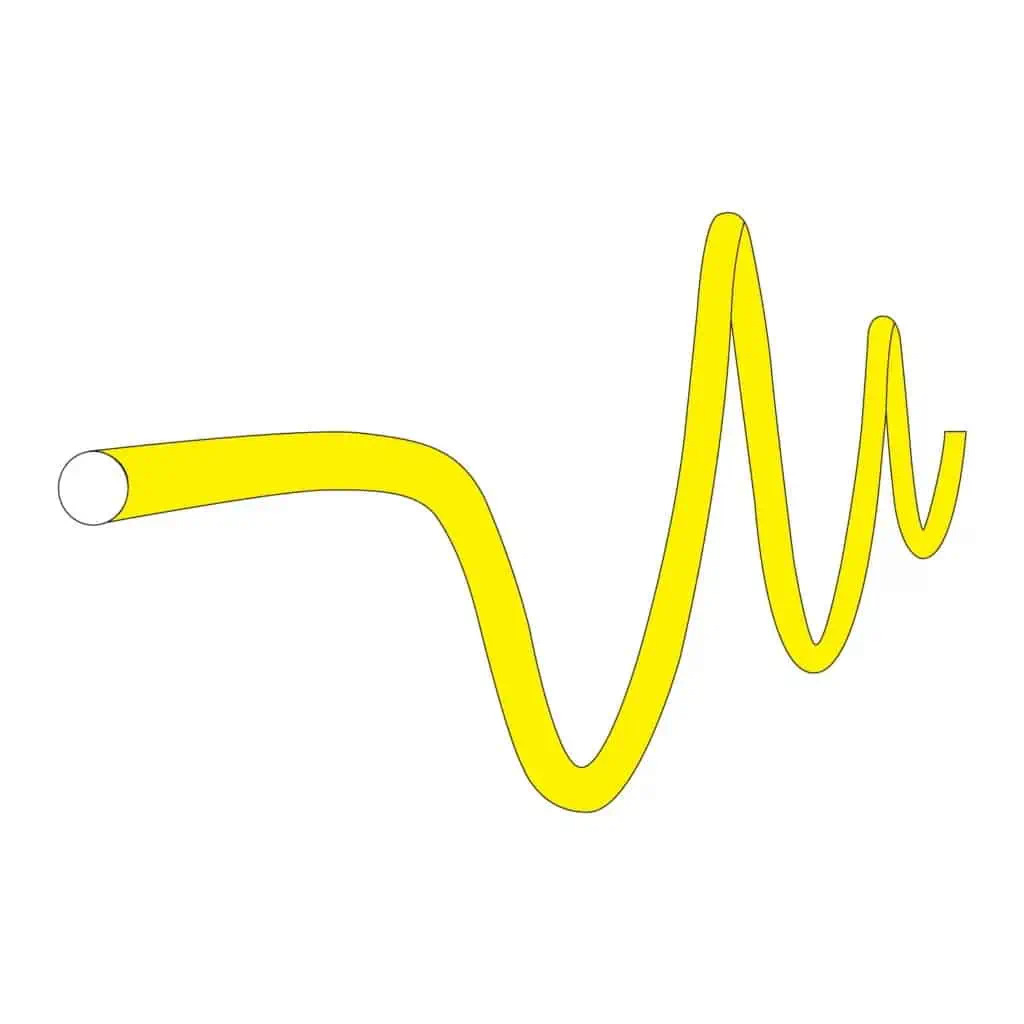
How to produce LED Neon Flex Lights?
The production process is divided into two main parts.
In the first part, the LED flexible strip is produced first, and the LED flexible strip is used as the light source for the neon lights. Please check the blog here if you need to know how to produce led strips in detail.
The second part is to add the silicone shell to the LED strip. There are two main ways to add the silicone shell. The first way is LED strip and silicone integrated extrusion. The second way is to produce the silicone tube first and then put the LED strip into the silicone tube manually.
LED strip and silicone integrated extrusion process
Step 1. Mixing silicone
Silicone is solid, there are generally two kinds of silicone used for neon lights, one is milky white, used to diffuse light, and one is white, used to block light. Neon lights of LEDYi are more advanced, use three colors of silicone, the extra color is transparent, used for cutting windows so that people can see the cutting position more clearly.
The raw material silicone is only one kind. To get different silicone colors, you need to add diffusion powder inside the silicone in a particular proportion. The more diffusion powder you add, the whiter the silicone will be and the lower the light transmission rate.
Step 2. The extrusion process begins with installing rolling LED strips on the payoff frame. These LED strips are adjusted and sequenced using an adjustment table.
Step 3. The LED strip and silicone are then passed through the holes in the pre-assembled die, activating the operating button on the electronic control box, which starts the machine to wrap the silicone onto the LED strip.
Step 4. The machine extrudes the silicone-coated LED strip and passes it through the vulcanizing oven, where the product is gradually vulcanized and shaped. The temperature inside the oven is kept moderate to avoid burning the LED beads. After vulcanization, the led neon is put out by a tractor.
Manual way
Step 1. Using silicone extrusion machines to make silicone neon sleeves or buying silicone neon sleeves from other factories. The silicone neon sleeving production process is similar to the LED strip and silicone integrated extrusion process above. The only difference is that there is no LED strip inside the silicone neon sleeving at the moment. There is only a wire inside.
Step 2. Take the prepared LED strip, tie it to the silicone neon tube with the wire, then pull the wire at the other end of the silicone neon tube to pull the LED strip inside the silicone neon tube.
Silicone integrated extrusion VS Manual way
1. The silicone extrusion method, as the led strip and silicone are extruded as one piece, the led silicone neon can be made longer, theoretically infinitely long. Because of the led strip’s voltage drop and transportation problems, it is generally recommended not to exceed 50 meters. And the maximum length of the manual way is usually 5 meters. If it exceeds 5 meters, it cannot be pulled in due to the friction between the led strip and the silicone neon tube.
2. The silicone is extruded in one piece, the silicone neon tube will be stuck to the LED strip inside, not loose, and the product quality is better. In contrast to the manual way, the LED strip and the silicone neon tube will move relatively.
3. The efficiency of the integrated silicone extrusion is much higher than the manual method.
4. For small quantities, e.g., 1-meter samples, the one-piece silicone extrusion method can be costly and take longer to produce because of the time and cost involved in setting up the machine. On the other hand, the manual way is effortless as the silicone neon tube is already in stock and only requires the manual pulling of the LED strip into the silicone neon tube.
How to ensure the quality of LED Neon Flex Lights?
1. Ensure that the light source LED strip with the brand or quality assurance LEDs, resistors, and IC components.
2. Ask the factory for the LM80 test report of the LEDs, check the expected life hours of the LEDs in the report, high-quality LEDs, L80 lifetime up to 50,000 hours.
3. Make sure that the PCB used for the light source LED strip is pure copper, double-sided PCB with a thickness of 2oz or 3oz.
4. Ensure that the LED silicone neon light housing is made of RoHS compliant, UV resistant, flame retardant, and corrosion-resistant high-quality silicone.
5. Ensure that the LED silicone neon is certified to the relevant product approvals, e.g., CE, RoHS, UL, etc.
6. Ensure that the color temperature range of the finished silicone neon lamp is as narrow as possible. Our LEDYi’s typically have a color temperature range of plus or minus 100K.
7. Ensure the color rendering index of the silicone neon lamp. The higher the color rendering index, the better! Our LEDYi silicone neon lights have a color rendering index of more than 90.
8. Ensure that the led silicone neon is available with a wide range of accessories. For example, there are solder-free plugs, integrated injection plugs, plugs for different wire outlet directions, mounting clips, mounting aluminum lights.
9. Ensure the LED silicone neon supports customization, OEM, ODM.
How to cut, solder and power LED Neon Flex Lights?
Step 1. Measure the length
Step 2. Find the cut position on the LED Neon Flex
Step 3. Cut the led LED Neon Flex
Step 4. Cut off some silicone from the LED Neon Flex
Step 5. Soldering cable to LED Neon by electric iron
Step 6. Fill silicone in LED Neon and endcap
Step 7. Light up the LED Neon to test
Step 8. Wait for the silicone to dry and solidify
How to cut, connect and power LED Neon Flex Lights with solderless connectors?
Step 1. Measure the length
Step 2. Find the cut position on the LED Neon Flex
Step 3. Cut the led LED Neon Flex
Step 4. Attach connectors to LED Neon
Step 5. Connect the power plug to LED Neon
Step 6. Light up the LED neon to test
How to install LED Neon Flex Lights?
Step 1: Measure the length
Step 2: Find the cut position on the LED Neon Flex
Step 3: Cut the led LED Neon Flex to size
Step 4: Attach connectors to LED Neon
Step 5: Connect the power plug to LED Neon
Step 6: Use screws to fix the mounting clip or mounting channel to the place you need to install
Step 7: Press the LED neon light into the mounting clip or mounting channel
Step 8: Light up the LED Neon to test
How to connect LED Neon Flex Lights to power supply?
Step 1: Check the working voltage of LED Neon Flex
Step 2: Find a compatible power supply and controllers if need
Step 3: Install the LED Neon Flex on the place your desired
Step 4: Install the power supply and controllers
Step 5: Connect the LED Neon Flex to power supply or controllers
Step 6: Light it up
Please check the wiring diagram below:
FAQs
Yes, you can. But you must cut LED Neon Flex on the cut mark. You can see the cut markings “scissors or black line” through the neon transparent window.
No, you can’t. You must cut LED Neon Flex on the cut mark. You can see the cut markings “scissors or black line” through the LED neon transparent window. If you cut the LED Neon Flex anywhere other than the cut mark, you will damage the PCB, which will cause the segment of LED Neon Flex to fail.
Yes, you can. But, you must cut smart LED Neon Flex on the cut mark. You can see the cut markings “scissors or black line” through the neon transparent window.
You can cut LED Neon Flex on the cut mark. You can see the cut markings “scissors or black line” through the neon transparent window.
Yes, LED Neon Flex is IP67 or IP68 waterproof.
Step 1: Cut the LED Neon Flex.
Step 2: Attach solderless connectors to LED Neon Flex
Step 3: Joint the LED Neon Flex with the solderless connectors
Step 4: Light up to test
The LED neon light uses LED strips as the light source inside, diffuses the light through the silicone shell, and finally achieves the uniform light without light spots.
Generally, the lifetime of LED neon is between 30,000 hours and 5,000 hours, which ultimately depends on the quality of the light source LED and the heat dissipation effect of the LED neon tube.
Yes. LED neon lights do not contain harmful chemicals such as heavy metals, use less electricity, are not easy to break, have low operating voltage, are safe, and have a longer lifespan.
Conclusion
In conclusion,Neon flex has many benefits that make it a great choice for projects of all sizes. It is a durable and cost-effective option, with a variety of colors, lengths, and styles to choose from. Neon flex is also energy efficient and much more convenient than traditional neon tubing. This makes it perfect for permanent installations or custom designs. The combination of these advantages make Neon flex an ideal solution for anyone looking to create something eye-catching and unique.
LEDYi manufactures high-quality LED strips and LED neon flex. All of our products go through high-tech laboratories to ensure the utmost quality. Besides, we offer customizable options on our LED strips and neon flex. So, for premium LED strip and LED neon flex, contact LEDYi ASAP!
